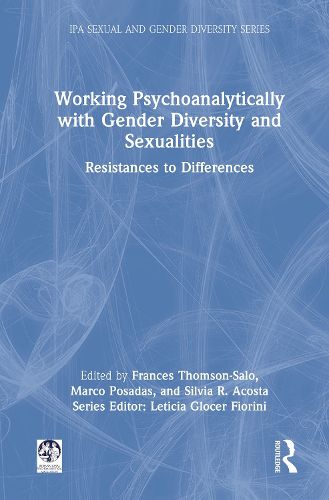Readings Newsletter
Become a Readings Member to make your shopping experience even easier.
Sign in or sign up for free!
You’re not far away from qualifying for FREE standard shipping within Australia
You’ve qualified for FREE standard shipping within Australia
The cart is loading…






Working Psychoanalytically with Gender Diversity and Sexualities considers and challenges expectations about psychoanalytic work with LGBTQIA+ patients.
The book is organised into three parts, starting with a theoretical review, which includes a discussion of the relevance of the Oedipus complex, resistance to infantile sexuality, the conquest of otherness and challenges in maintaining neutrality. Secondly, the contributors approach an ethical dimension, with chapters describing different moments in the way in which psychoanalysts engage with ethical responsibility in the face of gender and sexual diversity. The third part of the book considers an ontological dimension, that incorporates fluidity as a condition of the subject as an object of study and includes factors such as race and generational status, emergence of stigmas and a particular focus on the concept of helplessness. The contributors offer insight into countertransferential reactions and responses in clinical work, ensuring that analysts can work with these patients without preconceptions standing in the way.
Extending an opportunity to air conflicting psychoanalytic views and rethink established psychoanalytic concepts, this book will be key reading for psychoanalysts and psychotherapists in practice and in training. It will also be of interest to academics and students of psychoanalytic studies and gender studies.
$9.00 standard shipping within Australia
FREE standard shipping within Australia for orders over $100.00
Express & International shipping calculated at checkout
Working Psychoanalytically with Gender Diversity and Sexualities considers and challenges expectations about psychoanalytic work with LGBTQIA+ patients.
The book is organised into three parts, starting with a theoretical review, which includes a discussion of the relevance of the Oedipus complex, resistance to infantile sexuality, the conquest of otherness and challenges in maintaining neutrality. Secondly, the contributors approach an ethical dimension, with chapters describing different moments in the way in which psychoanalysts engage with ethical responsibility in the face of gender and sexual diversity. The third part of the book considers an ontological dimension, that incorporates fluidity as a condition of the subject as an object of study and includes factors such as race and generational status, emergence of stigmas and a particular focus on the concept of helplessness. The contributors offer insight into countertransferential reactions and responses in clinical work, ensuring that analysts can work with these patients without preconceptions standing in the way.
Extending an opportunity to air conflicting psychoanalytic views and rethink established psychoanalytic concepts, this book will be key reading for psychoanalysts and psychotherapists in practice and in training. It will also be of interest to academics and students of psychoanalytic studies and gender studies.